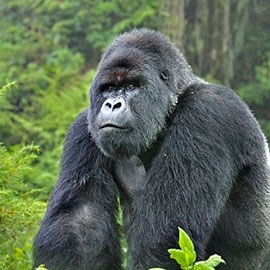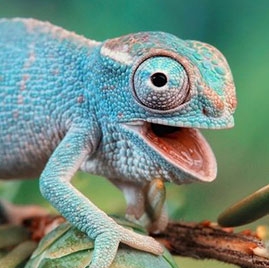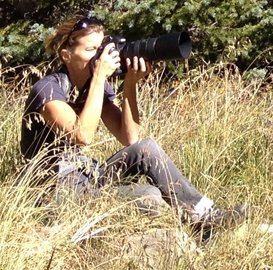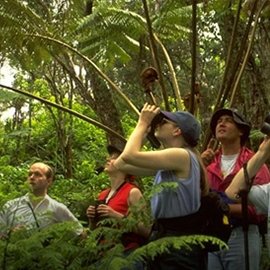Ivindo National Park
Safari suitability: 7/10
Find your tourThe region is so dense it makes for a much different experience compared to wildlife viewing in the savannah. It is considered more of a forest experience, filled with exploring, perfect for the intrepid traveler.
Highlights
- Ivindo National Park has some of the densest rain forests in the world
- Home to some of the most magnificent waterfalls of central Africa, including Kongou, Mingouliand Djidji Waterfalls or Chutes, in French
- Langoué Bai provides a rare opportunity to see animals up-close in their natural habitat
- A wide-variety of animals can be found here, from low-land gorillas to elephants to butterflies
About Ivindo National Park
Ivindo National Park is a new park, established in 2004 and located in Gabon, central Africa. The park straddles the equator and tends to be very humid and tropical with dense vegetation of lowland forest. Covering nearly 3000 km2 (1158 miles2) it has some of the most impenetrable rain forests and wildest rivers in the world.
The Ivindo and Djidji rivers both flow through the park, offering opportunities for kayaking and canoeing. One of the most spectacular features of the park is its waterfalls. Ivindo National Park is home to the Koungou, Mingouli and Djidji, known to be the most remarkable waterfalls in all the forests of Africa
There is a variety of wildlife in the park, including forest elephants, buffalo, bush pig and primates including the gorilla and chimpanzee. There are also various bird species and a thriving butterfly population. The Langoue Bai research camp, established by the Wildlife Conservation Society, monitors wildlife in the park, providing visitors with a rare opportunity to see animals up-close in their natural habitat. The bai—a pygmy word for clearing—is made up of nourishing soil that draws forest animals out into the open, most notably elephants and lowland gorillas. Unfortunately, due to its very basic nature and location deep at the center of the park, the camp is only able to host a small number of visitors each year. The camp can only be accessed on foot, and travelers should expect to carry their luggage.
When is the best time to visit Ivindo National Park?
Because of its location on the equator the weather tends to be warm all year long. But, like many parts of Africa, Ivindo has two seasons: wet and dry.
Ivindo dry season
June-July-August: During this time of year there is little rainfall and the temperatures are at their warmest, reaching 25C/75F.
Ivindo rainy season
September-May: For the remaining nine months of the year, the parks sees more moisture and cooler temperatures. For those looking to do boating safaris, the rainy season is more desirable. Rains fall intermittently during the rainy season, and skies often brighten up for a few hours, giving photographers photo opportunities year-round.
Getting to Ivindo National Park from Libreville, Gabon
Ivindo National Park is isolated in terms of surrounding populations and offers very limited access. One of the most alluring aspects of Ivindo is its remote location and limited accessibility. For those wishing to visit, options are limited.
Private, charter flights are the quickest and most expensive options.
It is also possible to reach the park via the Trans-Gabon railway in Libreville or from Lope National Park. It is the only railway in Gabon. The train ride appears to take 6-7 hours from Libreville and, at present (2017) there doesn't appear to be a website for the railway. However, this site is useful for those wishing to know more. http://www.seat61.com/Gabon.htm












